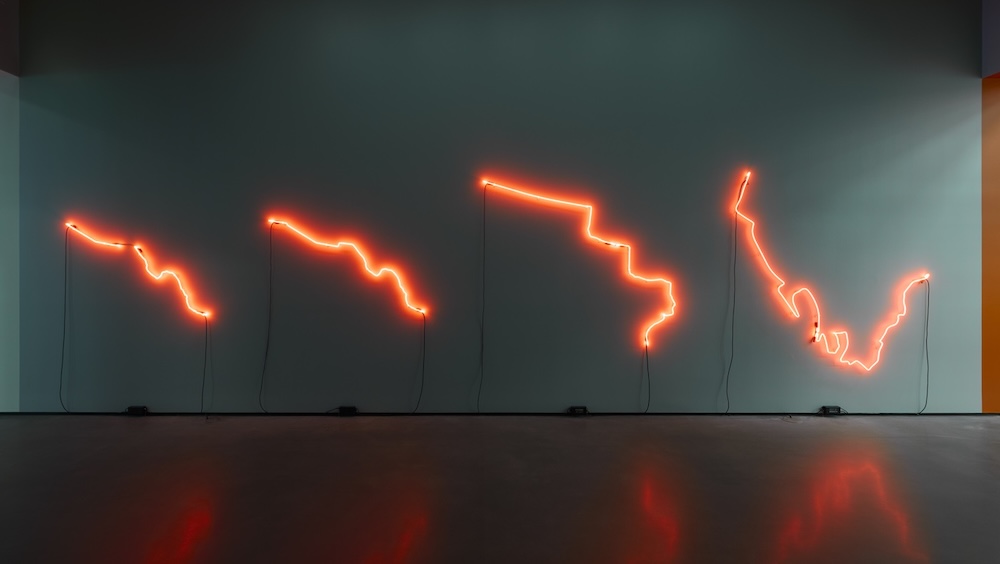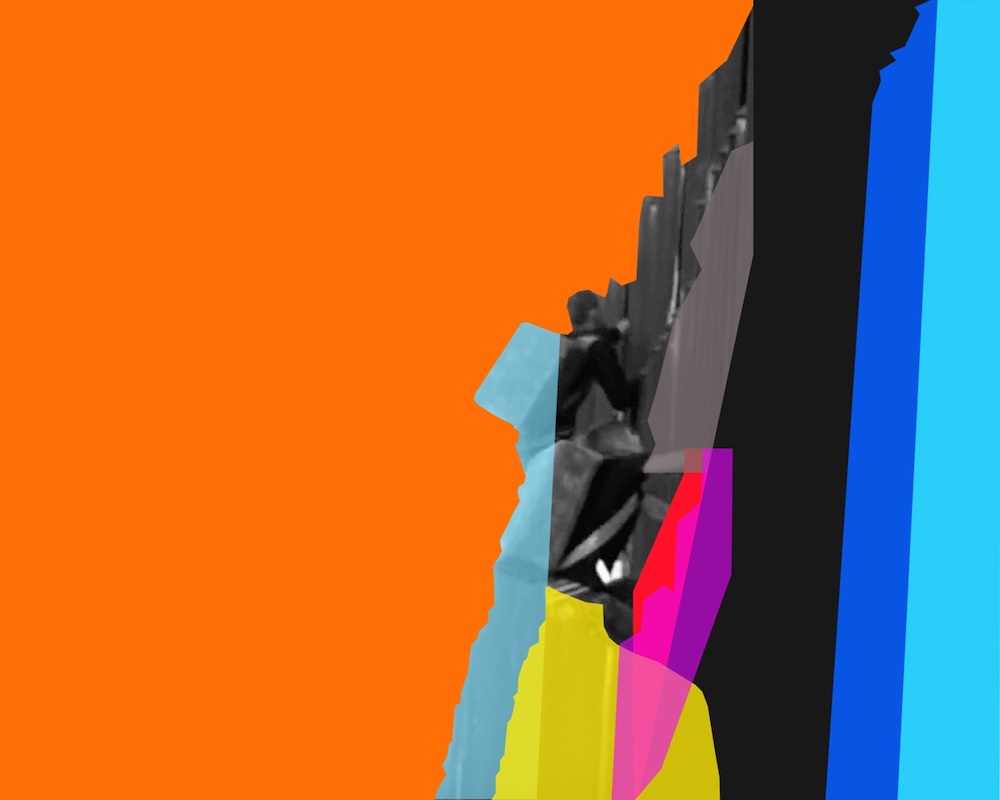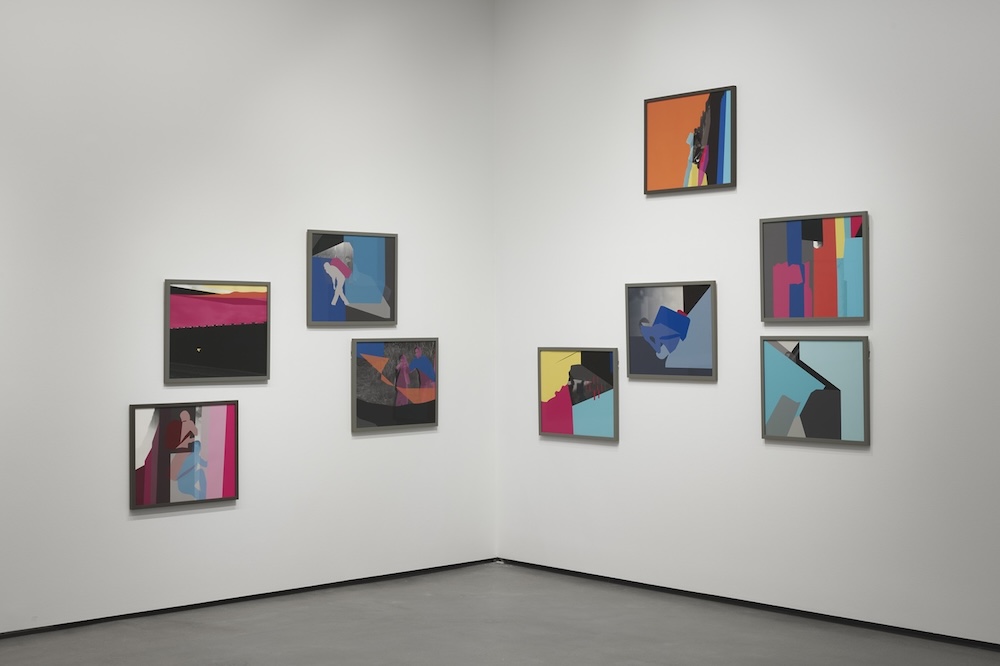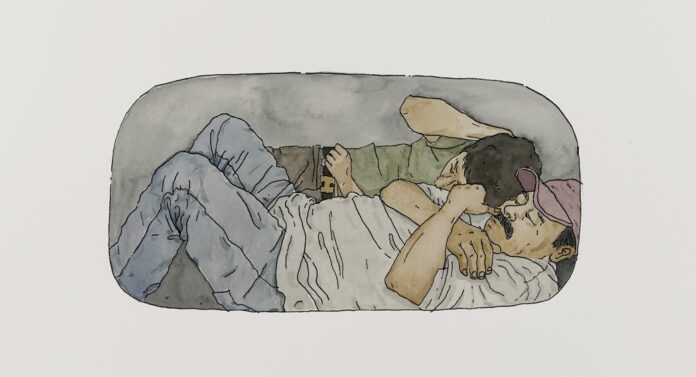It’s hard to pin down the multidisciplinary work of artist Julio César Morales. If you ask, he will tell you he is a musician using visual art as his instrument. Across mediums, there is one constant: sharing the immigrant experience.
“Each project begins with the subject matter itself and the chosen medium emerges from the question of how best to represent ‘the story.’ This has led me to work across painting, drawing, architecture, video, performance, conceptual practices, music, sculpture, ceramics, neon, design, and even food,” Morales said.

A graduate of the San Francisco Art Institute’s New Genres Program (BFA, 1996), Morales began his studies in graphic design at Southwestern City College in San Diego, but everything shifted when he enrolled in a black-and-white photography class.
“The darkroom became a transformative space for me. The process felt like alchemy: developing negatives, placing a blank sheet of photo paper into the chemicals, and watching an image slowly emerge. That moment of seeing a photograph come alive was pure ecstasy—I was hooked. Soon after, I changed my major to photography, setting me on the path toward fine arts,” Morales said.
Morales grew up in Tijuana and San Diego and moved to the Bay Area in 1990 to pursue his art education and practice. After nearly a decade in Arizona, Morales has recently returned to San Francisco and lives in the Ingleside neighborhood. He enjoys the culture, history, people, art, open-mindedness, food, and ability for change that make up the Bay Area.
One pivotal moment for Morales came when he met conceptual Chicano and Indigenous artist James Luna at an exhibition.
“We became friends, and he invited me to see his work at the Museum of Art in Balboa Park, San Diego. After walking through galleries filled with the heavy grandeur of European baroque painting, I found Luna lying half-naked and silent on a pedestal in the corner of a room, The Artifact Piece (1987). That encounter was my introduction to performance and conceptual art. It shifted everything I thought art could be, and it inspired me to pursue the performance and video program at the San Francisco Art Institute,” Morales said.
Along with Luna, his primary influences include visual artists Carlos Villa, Suzanne Lacy, and Roy DeCarava; and musical artists Damaso Perez Prado (credited with popularizing mambo), David Bowie, and Nina Simone. His creative explorations are rooted in family, life on the border, and storytelling.
“My work engages with issues and stories related to immigration and migration, change, diversity, struggle, human rights, unknown histories and revisionist histories, informal economies, and musicology,” Morales said.

He allows for these stories to reveal themselves in a variety of ways. In a recent series, Gemelos, a continuation of his Undocumented Interventions series, Morales uses watercolor because he considers it the softest of mediums.
“Its delicacy allows me to add a sense of tenderness to the painful and often violent experiences endured by people attempting to cross the border,” he said.
By contrast, My America is Not Your America, a large-scale sound installation, reflects Morales’s deep engagement with various musical genres and the transformative possibilities of sound. The piece is part of My America, Morales’s sixth solo show with Gallery Wendi Norris in San Francisco, which has represented him for 14 years. The centerpiece of the show, the installation was created in collaboration with the Mexican Institute of Sound in Mexico City.
“Here, music becomes a tool for social change, an intervention that both critiques and reimagines the ways we understand belonging, identity, and power,” Morales said.
A day in the life for the artist begins fairly routinely.
“I drop off the chupacabras (my kids) at school, go to the gym, arrive at my Divisadero Street studio, and grab my third cup of coffee. I find five albums to play, make a list of what to accomplish for the day, and respond to emails,” he said.
His day continues on with some creative basics—making sketches for new work and checking in with works in-progress—then takes a departure as experimentation with new mediums like charcoal, gouache, and photography, commences.

Morales spoke to 48hills in more detail about how his work has always been shaped by his family’s experience of life on the border, a subject he has been exploring since the 1990s.
“It is striking to me that, after so many years, the struggles surrounding immigration and the border remain unchanged. In the current climate—with ICE raids and intensified hostility toward immigrant communities—I feel my work has become even more urgent, as it seeks to bring attention to immigrant lives, labor, and rights,” Morales said.
He adds that from a visual and conceptual standpoint, he draws influence from the graphic language of the social movements of the Black Panthers, the United Farm Workers, and the Civil Rights movement, as well as Russian Constructivism. He also finds resonant potency from minimalist and conceptual art and early histories of cinema.
“These lineages shape my approach to image-making, and installation, while grounding my work in both personal history and broader struggles for justice,” he said.
Morales recently completed work for a mid-career solo exhibition titled OJO at UC Davis’ Manetti Shrem Museum, which runs through December 1. In this collection comprised of real-life narratives and found materials, nearly 50 works derived from his family’s experience of being on both sides of the border navigate bicultural existence, from an in-between place: ni de aquí ni de allá (neither from here nor there.)
Morales has also been steeped in preparations for the aforementioned My America exhibition at Gallery Wendi Norris, which will run through November 1.
“This project grew out of my deep connection to MIS’s song My America is Not Your America, which resonated with my own feelings about the ways this current administration’s right-wing, conservative, and authoritarian policies have threatened US culture, civil liberties, and constitutional rights,” he said.
Within the collaboration, a remix of the track was created that transformed it into the immersive sound environment now on display. Morales says the resulting installation incorporates neon works and a sculptural “listening space,” accompanied by five limited-edition vinyl records of the remixes.
“Through this project, I hope audiences will experience the installation as a kind of re-tuning of body and mind—an act of resistance, reflection, and possibility through sound,” he said.
Recent and ongoing group exhibitions include Tierras Reimaginadas: Migration at ASU Art Museum, Tempe, Arizona, through August 2, 2026; The Arrested Image: Identity Through the Lens of Law Enforcement at the Samuel Dorsky Museum of Art in New Paltz, New York, through November 2; and the previous Public Texts: A Californian Visual Language at the Art, Design & Architecture Museum in Santa Barbara.

Reflecting over the arc of his career, Morales says he is impressed with how many experiences from his younger self have surfaced and translated to a multitude of art projects over time.
“I always wanted to be a composer-musician who made music for films, and now I feel I am a conceptual musician and have found my voice through visual art,” he said.
Reluctant to provide definitive answers in his work, Morales says he aims rather to pose new questions that open up multiple perspectives, creating space for dialogue around the social, political, and cultural issues.
Apart from his visual art, Morales occupies his time with listening, reading and writing poetry, and the study of music autobiographies. His experimental nature extends to culinary adventures and “how it helps shape culture and class.” He says he’s also into meditation, organizing curatorial and artistic archives, and being a better home dad and partner.
Through continued inquiry into the nature of the immigrant experience, multidisciplinary artist Julio César Morales hopes his work will have an indelible impact on our perceptions of this layer of culture as well as encourage others to share their own stories.
“Never forget to share, inspire and mentor others and give yourself and your knowledge away without hesitation or reservation,” he said.
For more information, visit gallerywendinorris.com and his page on Instagram.





